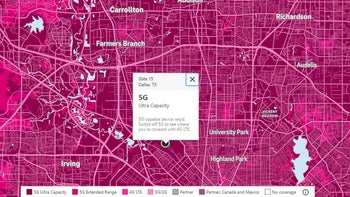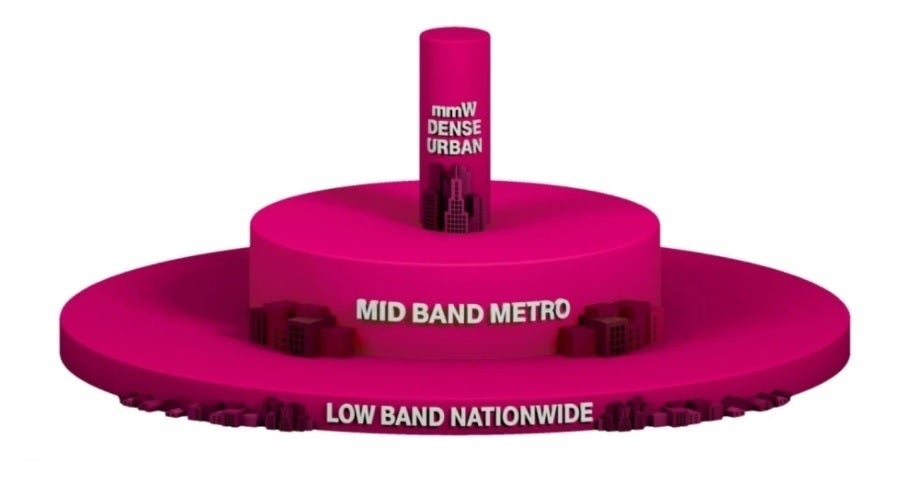Revised map allows T-Mobile subscribers to find its fast Ultra-Capacity mid-band 5G service

T-Mobile spent over $26 billion to buy Sprint so that it could take control of the latter's 2.5GHz mid-band spectrum. It was a shrewd move on the carrier's part because the mid-band spectrum provides faster 5G download data speeds than low-band spectrum, but travels farther than high-band airwaves. The mid-band 5G data speeds might not be as fast as mmWave coverage, but they are available in more areas and deliver 5G speeds that are actually faster than 4G LTE.
To make it easier for T-Mobile subscribers to know where its mid-band "Ultra-Capacity" 5G network is near them, T-Mobile revised its online coverage map. Ultra-Capacity 5G can be found mostly in mid-sized cities with population ranges in the neighborhood of 10,000 to 50,000 people.
The carrier offers its nationwide low-band 5G network which delivers download data speeds not much faster than 4G LTE, if it is any faster at all. This service runs on T-Mobile's 600MHz low-band spectrum and the signal travels far enough to help the wireless provider blanket the country with service that is 5G in name only. For T-Mobile customers, 5G really begins with the Ultra-Capacity 5G service.
At the risk of repeating ourselves, mid-band spectrum travels farther than mmWave but not as far as low-band. According to T-Mobile, the Ultra-Capacity 5G covers 165 million people in the U.S. and offers download data speeds measured in hundreds of megabits. Most of those people live in densely populated areas and the reason why shows that T-Mobile has its thinking cap on.

T-Mobile's 5G Triple-Layer Cake with low-band, mid-band, and high-band 5G spectrum
It has focused on placing its slowest low-band 5G network in rural parts of the country since the slower 5G speed it provides feels amazing in comparison to the much slower 3G and 4G signals that those living in the rural areas of the country might be used to.
By setting its sights on Sprint's mid-band spectrum, T-Mobile beat its rivals to the punch as neither Verizon nor AT&T have dedicated mid-band spectrum at this point. That will change next year when Verizon and AT&T get to use the C-band spectrum that they spent $68 billion for combined in an FCC auction for the mid-band airwaves. Verizon won 3,500 C-band licenses in the auction, AT&T took home 1,600 licenses, and T-Mobile, which has all the mid-band spectrum it needs, parted with over $9 billion for 162 C-band licenses.
Without Mid-band up and running at this point, using Verizon's 5G service is an all or nothing crap shoot. You either have access to its Ultra Wideband service with zippy 5G signals running at "Gig" speeds. Or, you are connected to its Dynamic Spectrum Sharing (DSS) system that offers low-band 5G service at speeds often beat out by 4G LTE.













Things that are NOT allowed: